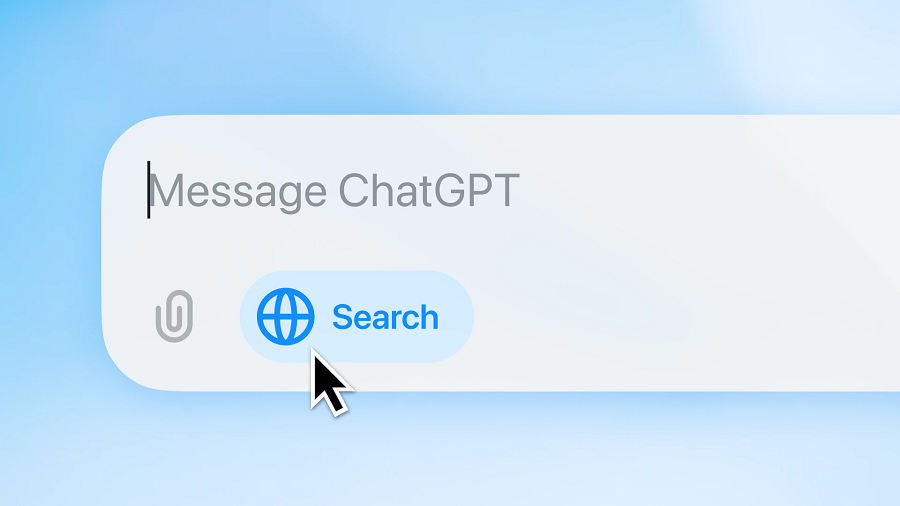 AI
AI
 AI
AI
 AI
AI
OpenAI today introduced an internally developed search engine for its ChatGPT chatbot service.
The move is not unexpected. In late July, OpenAI debuted a standalone search engine called SearchGPT that it described as a “temporary prototype.” The company stated that its goal with the project was to collect feedback from users before incorporating the service’s key features into ChatGPT.
ChatGPT search, as the chatbot’s new embedded search engine is called, will launch automatically in response to some queries. The feature can also be activated manually using a new button below ChatGPT’s prompt box. Additionally, users may set it as their browser’s default search engine and enter queries via the URL bar.
The feature works similarly to other AI-powered search tools such as Google LLC’s AI Overviews. When a user enters a query, ChatGPT search doesn’t return a list of webpage links but rather answers the question directly in a natural language format. Responses vary in length from a few sentences to multiple paragraphs.
Depending on the query, ChatGPT Search may add additional elements to its answer. When a user asks about a company’s stock price, the feature can display a graph that visualizes how the shares’ value changed in the past few days. ChatGPT also has dedicated prompt response formats for several other query categories including weather, sports, news and maps.
A “Sources” button below each AI-generated answer allows users to view the webpages from which ChatGPT search gathered information. Citations appear in a sidebar next to the query results.
Under the hood, ChatGPT search runs on a customized version of OpenAI’s GPT-4o large language model. The company says it customized the model using synthetic data, or training data generated by an AI. This information was created with the help of a machine learning technique called model distillation.
Model distillation enables developers to transfer knowledge between LLMs. OpenAI used the method to equip the version of GPT-4o that powers ChatGPT search with knowledge from o1-preview, a reasoning-optimized model it debuted in September. Sharing information between LLMs in this manner helps improve the quality of their responses.
OpenAI’s knowledge base entry for ChatGPT search states that the feature may “share disassociated search queries with third-party search providers such as Bing” while processing queries. That suggests the feature relies on Bing to answer some user questions. Bing developer Microsoft Corp. has invested more than $13 billion in OpenAI over the past few years.
ChatGPT search is available to users of the chatbot’s subscription-based Plus and Team tiers on launch. OpenAI will roll it out to the two other paid plans, Edu and Enterprise, in a few weeks. Users of the free version will receive access to the tool in the coming months.
OpenAI’s plans for ChatGPT search also include feature additions. The company intends to add a capability that will use the reasoning-optimized o1 series of LLMs to help users perform research. Additionally, OpenAI will make ChatGPT search better at processing shopping and travel queries.
“The early results of Bing search integrated into ChatGPT have been shaky, and the incredibly complex requirements of maintaining a world-class search platform tap into areas of expertise where OpenAI has yet to demonstrate its capabilities,” said Damian Rollison, the director of market insights at marketing technology company SoCi. He added that the success of ChatGPT search “will hinge on its bringing a different approach to the search experience that users find truly refreshing and new.”
Support our mission to keep content open and free by engaging with theCUBE community. Join theCUBE’s Alumni Trust Network, where technology leaders connect, share intelligence and create opportunities.
Founded by tech visionaries John Furrier and Dave Vellante, SiliconANGLE Media has built a dynamic ecosystem of industry-leading digital media brands that reach 15+ million elite tech professionals. Our new proprietary theCUBE AI Video Cloud is breaking ground in audience interaction, leveraging theCUBEai.com neural network to help technology companies make data-driven decisions and stay at the forefront of industry conversations.